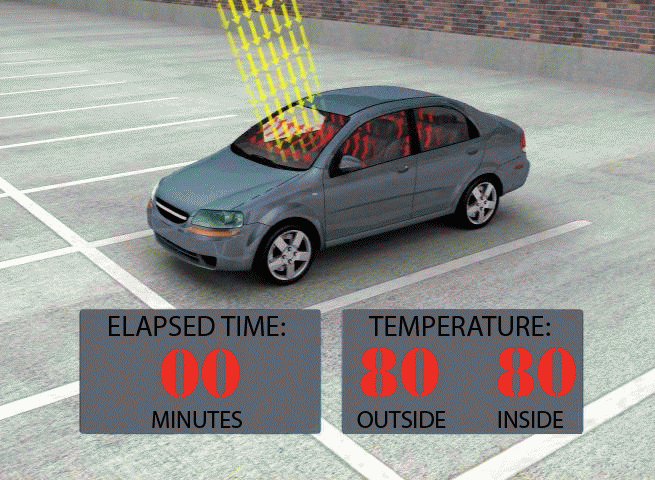
A parked car can become dangerously hot in minutes, even if the weather feels mild.
In just 10 minutes, the temperature inside a car can rise by 20°F. Even on a cooler day, a car can quickly turn deadly.
- A child’s body heats up five times faster than an adult’s, making them more vulnerable to heatstroke.
- Heatstroke can begin at 104°F, and death can occur at 107°F.
- Cracking the windows does NOT slow the temperature rise significantly.
While there are three primary circumstances that typically lead to child hot car deaths, a little more than half of all pediatric vehicular heatstroke deaths over the past 25 years have resulted from children who were unknowingly left in the vehicle. It is commonly reported that in the course of a drive, a parent or caretaker loses awareness of the presence of a child in the back seat of the car. Upon arriving at the destination, the driver exits the car and unknowingly leaves the child in the car. This lapse of memory exposes forgotten children to hazards, including death from heatstroke.
Since 1998, about 500 children have suffered from heatstroke after being unknowingly forgotten in vehicles. How can loving and attentive parents, with no evidence of substance abuse or an organic brain disorder, have a catastrophic lapse of memory that places a child’s welfare in jeopardy?
The articles below by Dr. David Diamond address this question:



